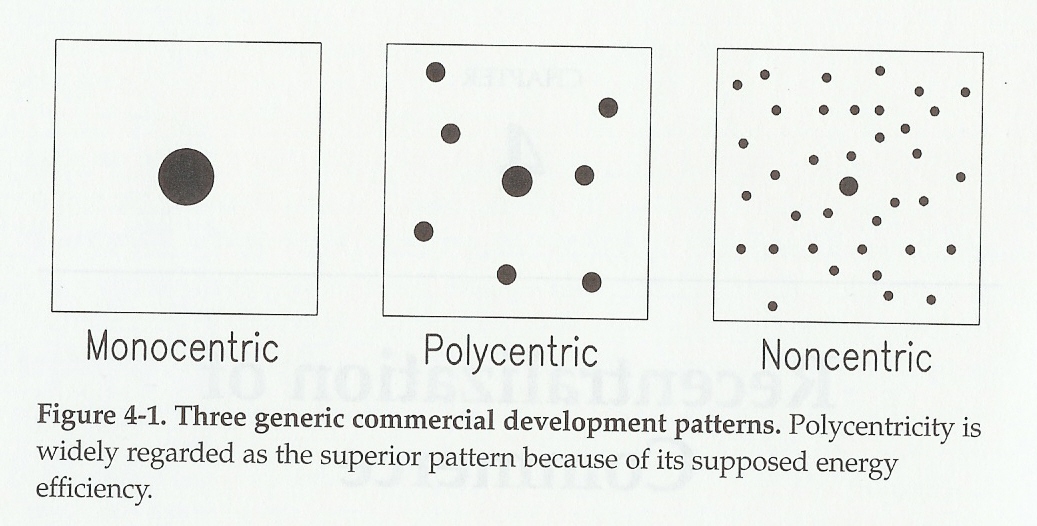The case for concentration/agglomeration as it relates to land use and transportation poicy
James Robertson, 56, has been making headlines for walking more than 20 miles to and from work every weekday in Detroit. Photo: Ryan Garza/Detroit Free Press/TNS/Landov.
There is a lot of discussion in transit circles about the story from Detroit, where resident James Robertson, working in Rochester Hills (about 23 miles from where he lives) spent many hours each day, walking about 21 miles daily, to get to and from work, because of gaps in the transit network in various places in Suburban Oakland County.
Years ago Mr. Robertson's car broke down, and making under $11/hour, he hasn't managed to save enough money to buy a car.
So he took buses, and walked the distance between the gaps in service--mostly between Troy and Rochester Hills as the suburbs of Detroit haven't been too keen on providing quality transit service, the "Motor City Metropolitan Area" being built on the automobile--in order to get to work or to catch a bus. (Me, I would have gotten a bicycle, but that's another story.)
People touched by the story donated money ("'Walking man' James Robertson gets new Ford Taurus," Detroit Free Press). And so he got a new car. Interestingly, the cost to insure a car in Detroit--the rate of stolen vehicles, theft, and collisions being high--can be $4,000/year, which would be 20% of his pre-tax income...
There is a fair amount of coverage discussing how this demonstrates that the transit network in most places is inadequate.
While it is true that in most places the transit system is inadequate, especially in the Detroit area ("How metro Detroit transit went from best to worst," Detroit Free Press) the real issue is the "spread" (sprawl) and deconcentration of land uses throughout metropolitan areas, facilitated by a shift in the mobility system to the privately owned automobile.
Transit doesn't work very well in a land use and mobility system where major activities are spread widely and thinly throughout several thousand square miles.
In most places, not just Detroit, it's hard to get to and from a place efficiently when it is 23 miles away.
For example, Wayne, Oakland and Macomb Counties are 1,872 square miles in size, and comprise only a portion of the Detroit Metropolitan area--by contrast, DC; Arlington County, Fairfax County, and Alexandria in Virginia; and Montgomery and Prince George's Counties in Maryland total 1,504 square miles, and Downtown DC is still a major central business district, generating a fair amount of transit use.
Transit works a lot better when activities and major residential areas are concentrated, and where spatial organization of land use and transportation infrastructure still supports sustainable mobility (walking, biking, transit) common to the Walking City and Transit City eras of urban development.
The argument of re-concentration is one that Steve Belmont lays out in Cities in Full, a book which never got the attention it deserved--I think it's one of the most important books on urbanism since Death and Life of Great American Cities.
In it, he differentiates between polycentric and monocentric metropolitan areas, cities, and transit systems, and how polycentric metropolitan areas are difficult to sustain.
DC's WMATA transit system is polycentric, focused on facilitating the movement of suburban residents commuting to the city for work.
Because of its polycentric nature, across the region, the Metrorail system hasn't generated the benefits of concentrating activities and residential choice, the way that it has in much of DC and North Arlington County especially.
However, the one thing that Belmont missed about Washington is that, unintentionally, the Metrorail system, while polycentric, functions monocentrically at the core of Washington, DC proper, providing to the District of Columbia the kinds of intensification and urban design benefits that monocentric transit systems like the NYC Subway or San Francisco MUNI systems provide within those communities--although these benefits are concentrated in the core of the city served by about 31 of the city's 41 subway stations.
The challenge for DC is that suburban jurisdictions have different objectives from the transit system, and the respective interests and needs are frequently in conflict. (More on that in another post.)
 From the book Cities in Full.
From the book Cities in Full.But even in DC and Arlington County, concentration of economic activity and residential choice has happened in the face of great difficulties and support for such policies has declined over time in the face of vociferous opposition by the automobile-centric.
Labels: transit and economic development, transportation planning, urban design/placemaking, urban revitalization






3 Comments:
http://www.fastcompany.com/3036659/elasticity/lessons-from-googles-first-rollout-of-google-fiber
often times many of these national writers get DC completely wrong- we are way too often overlooked as a city- or unfairly compared to other places when other cities the same size do NOT get the same comparison treatment
nice information.Have a medicine website. there is a medicine that seems to work, please check out website.Take this medicne as advised by the doctor that are easily available at the online medicine store in USA.
Post a Comment
<< Home